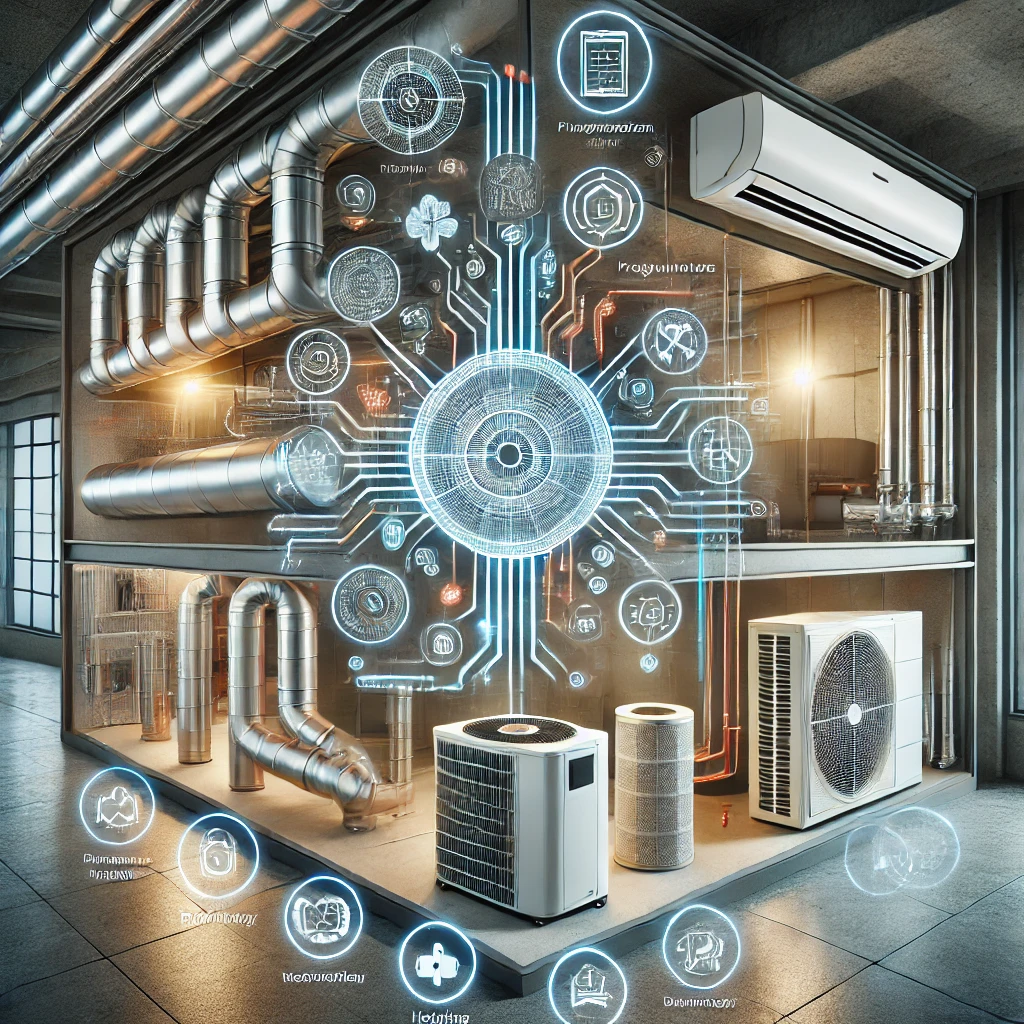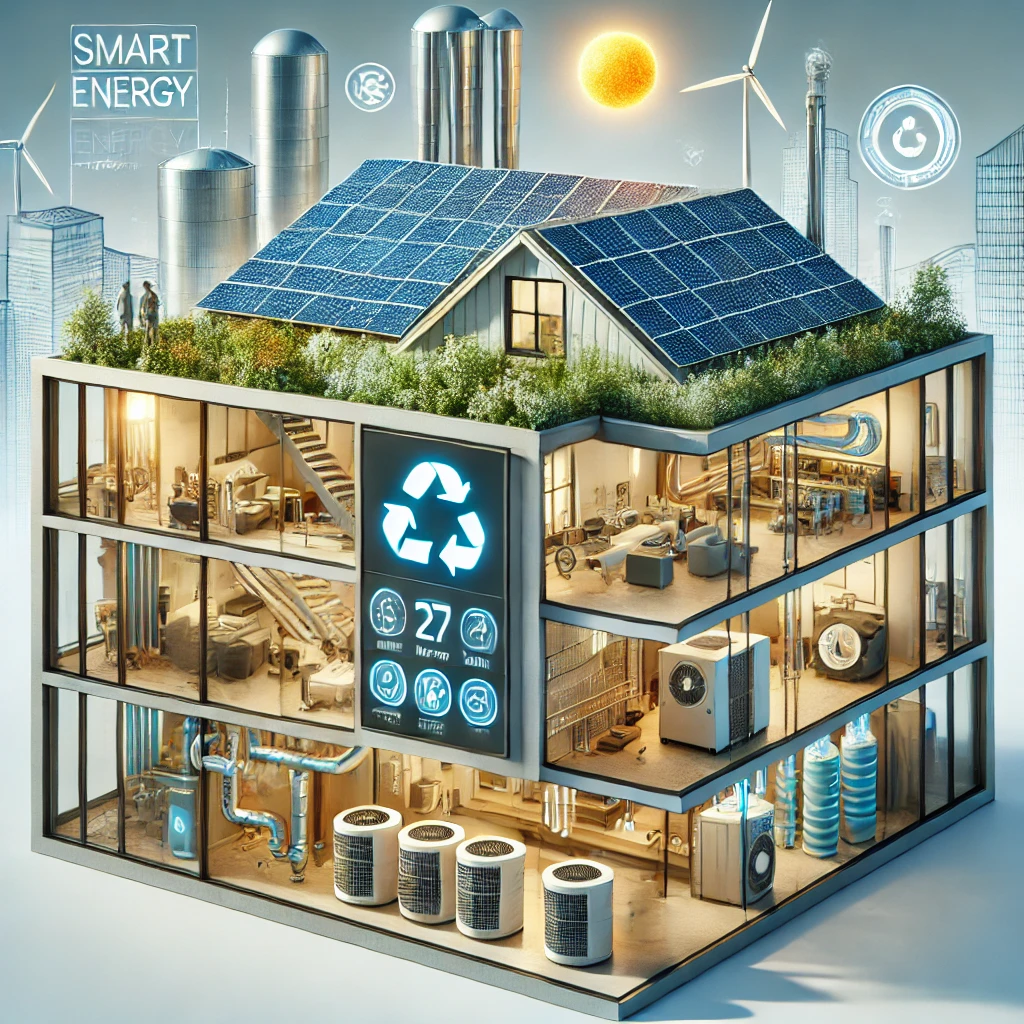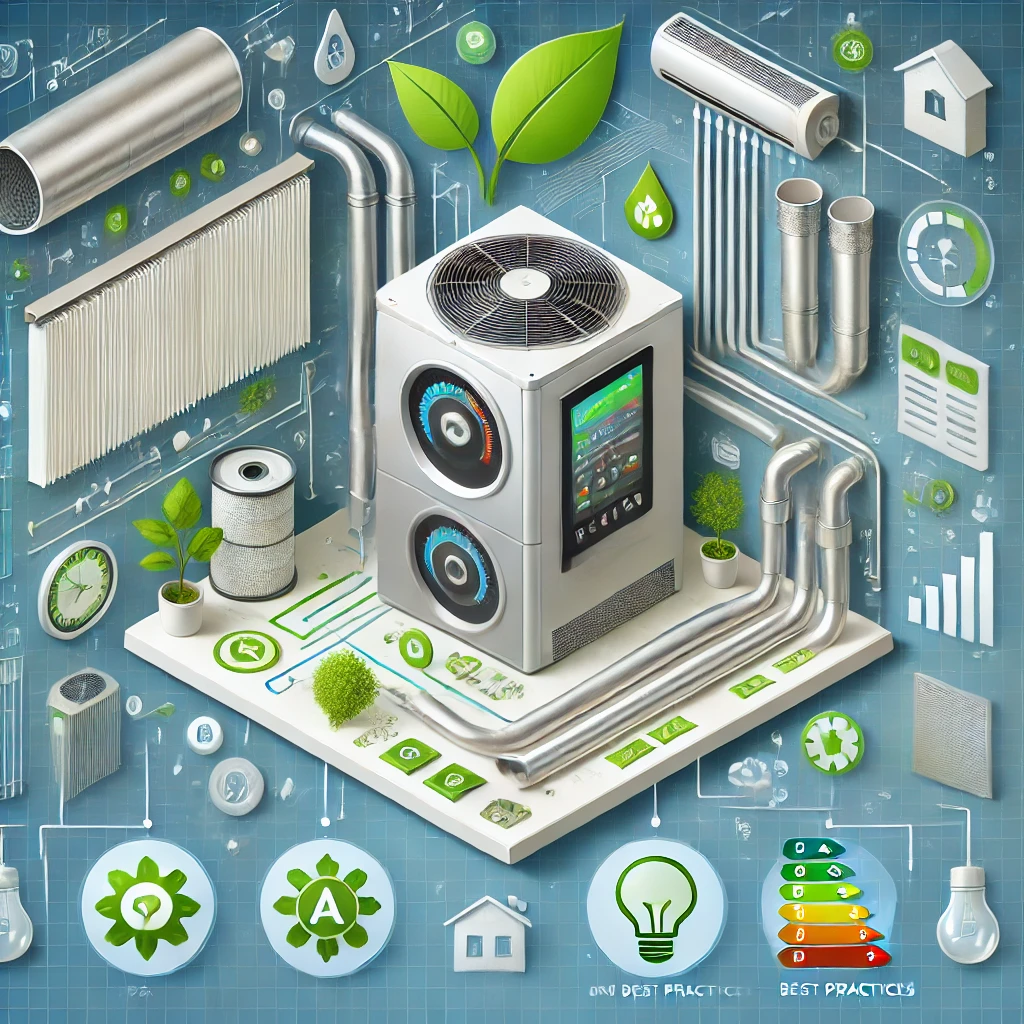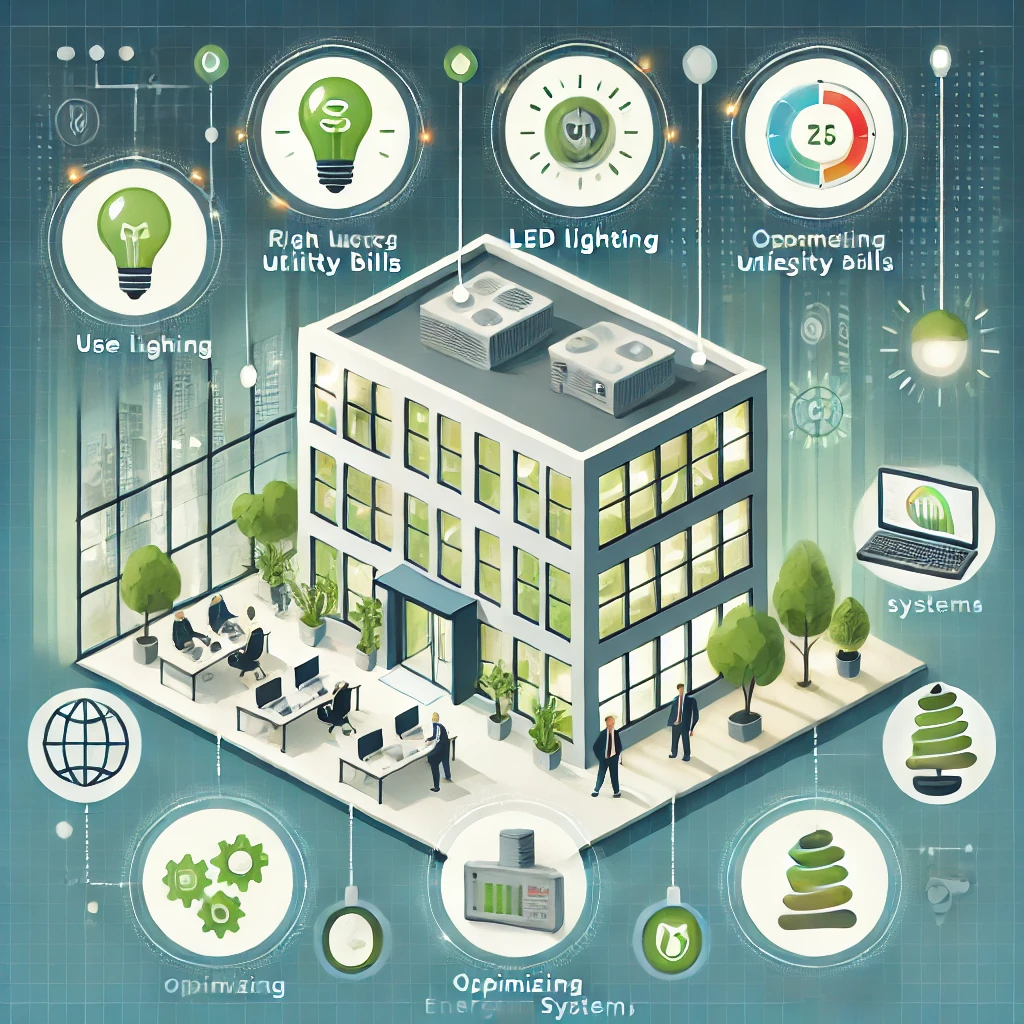Optimize HVAC Systems for Maximum Efficiency

Heating, Ventilation, and Air Conditioning (HVAC) systems play a critical role in maintaining indoor comfort, air quality, and energy efficiency in residential, commercial, and industrial buildings. However, HVAC systems can consume significant energy, especially if not properly optimized. Maximizing the efficiency of HVAC systems can reduce energy costs, enhance system longevity, and improve environmental sustainability. This article explores key strategies for optimizing HVAC systems for maximum efficiency.
Regular Maintenance and Inspection
The foundation of any efficient HVAC system is regular maintenance. Even the most advanced system can degrade in performance if neglected. Key maintenance tasks include:
- Filter Replacement: Dirty or clogged air filters reduce airflow, forcing the HVAC system to work harder. Regularly replacing or cleaning filters (at least every 1-3 months) ensures smooth airflow and prevents the buildup of dust and debris.
- Duct Cleaning and Sealing: Leaky or dirty ducts reduce HVAC efficiency by allowing air to escape or become obstructed. Regularly cleaning and sealing ducts prevents energy loss and ensures that the conditioned air reaches its intended destination.
- Check Refrigerant Levels: Incorrect refrigerant levels in air conditioning systems can decrease efficiency and cause higher energy consumption. Regularly checking and topping up refrigerants ensures the system operates at its best capacity.
- Inspect Fans and Belts: Worn-out or misaligned fan belts and blades reduce system efficiency and can cause mechanical failures. Ensuring they are regularly inspected and replaced when necessary keeps the system operating smoothly
Upgrade to Energy-Efficient Equipment
If an HVAC system is outdated, upgrading to newer, more energy-efficient equipment is one of the most impactful ways to optimize its performance. Modern systems are designed with energy-saving technologies that outperform older models. Consider the following:
- High-Efficiency HVAC Units: Modern HVAC units are designed to consume less energy while providing the same or better performance. Look for units with a high Seasonal Energy Efficiency Ratio (SEER) for air conditioners or a high Annual Fuel Utilization Efficiency (AFUE) rating for furnaces. These systems use less energy to heat or cool spaces, leading to significant cost savings.
- Variable Speed Fans and Compressors: Traditional HVAC systems operate at a fixed speed, meaning they run at full capacity even when only a fraction of that power is needed. Variable speed fans and compressors adjust their speed according to demand, providing more precise temperature control and reducing energy consumption.
- Programmable and Smart Thermostats: Installing programmable or smart thermostats allows for better control over HVAC operation. These devices can be programmed to adjust temperatures during different times of the day or even remotely, ensuring that heating or cooling is provided only when necessary. This reduces energy use when spaces are unoccupied.
Improve Insulation and Building Envelope
Even the most efficient HVAC system will struggle to maintain desired temperatures if the building’s insulation and envelope are insufficient. Poor insulation leads to energy loss, requiring the HVAC system to work harder to compensate. Improving the building’s thermal envelope can drastically improve HVAC efficiency. Key strategies include:
- Seal Windows and Doors: Gaps around windows and doors allow conditioned air to escape and outside air to enter. Sealing these gaps with weatherstripping or caulking prevents unwanted air exchange and helps maintain indoor temperatures more effectively.
- Upgrade Insulation: Inadequate insulation in walls, roofs, and floors leads to significant energy losses. Upgrading to higher R-value insulation reduces heat transfer, ensuring that heating and cooling systems don’t have to work overtime to maintain comfort.
- Install Energy-Efficient Windows: Older windows may allow heat to transfer easily between the inside and outside of the building. Energy-efficient windows, such as those with double or triple glazing and low-emissivity coatings, reduce thermal losses and improve the overall efficiency of the HVAC system.
Optimize System Zoning
System zoning allows different areas of a building to be heated or cooled independently, reducing the strain on the HVAC system and preventing energy waste. Instead of using one thermostat to control the entire building, multiple thermostats can be installed to regulate specific zones.
- Smart Zoning Systems: These systems allow homeowners or building managers to direct heating or cooling to only the areas that need it. For example, if certain parts of the building are unoccupied, the HVAC system can reduce energy use in those areas while maintaining comfort in occupied spaces.
- Ductless Mini-Split Systems: For buildings without ductwork, ductless mini-split systems can be an excellent zoning solution. These systems allow for independent temperature control in different rooms or zones, making them a highly efficient alternative to central HVAC systems.

Utilize Energy Recovery Ventilation (ERV) Systems
Energy recovery ventilation (ERV) systems are designed to exchange stale indoor air with fresh outdoor air while recovering energy from the outgoing air to pre-condition the incoming air. This process reduces the amount of work the HVAC system needs to do to heat or cool the fresh air.
- Improve Indoor Air Quality: ERV systems not only enhance HVAC efficiency but also improve indoor air quality by maintaining proper ventilation without wasting energy. These systems are particularly effective in climates with extreme temperature differences between indoor and outdoor environments.
- Reduce HVAC Load: By recovering heat or coolness from the outgoing air, ERV systems reduce the heating or cooling load on the HVAC system, leading to lower energy consumption and prolonged equipment life.
Leverage Renewable Energy Sources
Integrating renewable energy sources into the HVAC system can further optimize efficiency and reduce the system’s reliance on traditional power grids. Solar energy, geothermal systems, and other renewable sources can supplement or even replace conventional HVAC energy needs.
- Solar-Powered HVAC Systems: Solar panels can be used to power HVAC systems, particularly in regions with high sun exposure. Solar power reduces reliance on electricity from the grid, lowering energy costs and increasing sustainability.
- Geothermal Heat Pumps: Geothermal systems take advantage of the earth's stable underground temperatures to provide heating and cooling. These systems are highly efficient because they require less energy to move heat in or out of the building compared to air-source systems.
Monitor and Adjust System Performance
Monitoring system performance allows building managers or homeowners to detect issues early and make necessary adjustments before they impact efficiency. Many modern HVAC systems come with monitoring tools that provide real-time data on energy use, system health, and performance.
- Building Management Systems (BMS): BMS integrates all HVAC, lighting, and security systems into one platform, allowing real-time monitoring and control. By analyzing data on HVAC performance, adjustments can be made to optimize energy usage and address any inefficiencies quickly.
- Monitor Airflow and Balance: Proper airflow balance ensures that the HVAC system distributes air evenly throughout the building. Imbalances, such as under- or over-ventilation in certain areas, can cause the system to work inefficiently. Regularly checking airflow and making adjustments ensures optimal performance.
Educate Occupants and Staff
Finally, educating building occupants or staff on the proper use of HVAC systems can prevent energy waste and optimize performance. Simple behaviors like closing doors and windows when the HVAC system is running, setting thermostats to efficient temperatures, and reporting system issues promptly can make a significant difference in overall efficiency.
Conclusion
Optimizing HVAC systems for maximum efficiency requires a combination of regular maintenance, system upgrades, building improvements, and monitoring. By adopting these strategies, property owners can reduce energy consumption, lower operational costs, and create a more comfortable and sustainable indoor environment. Whether for residential or commercial buildings, these techniques ensure that HVAC systems operate at peak efficiency while contributing to long-term energy savings.
Category:



